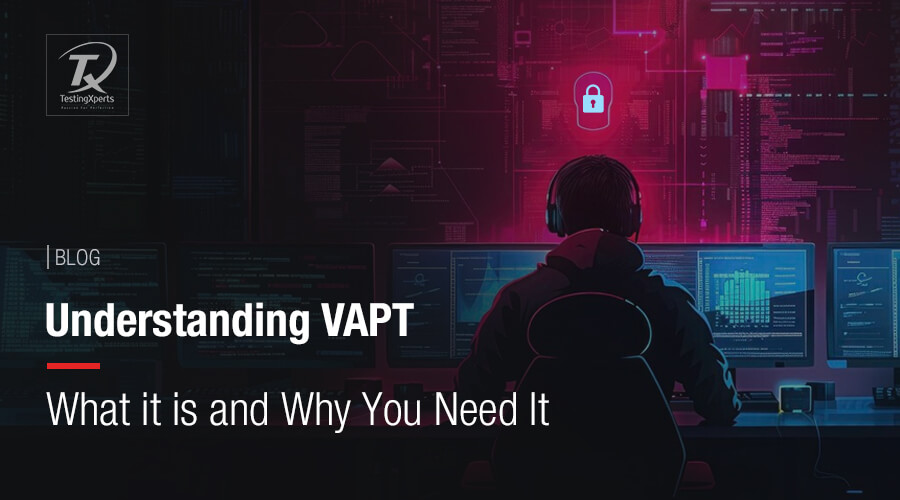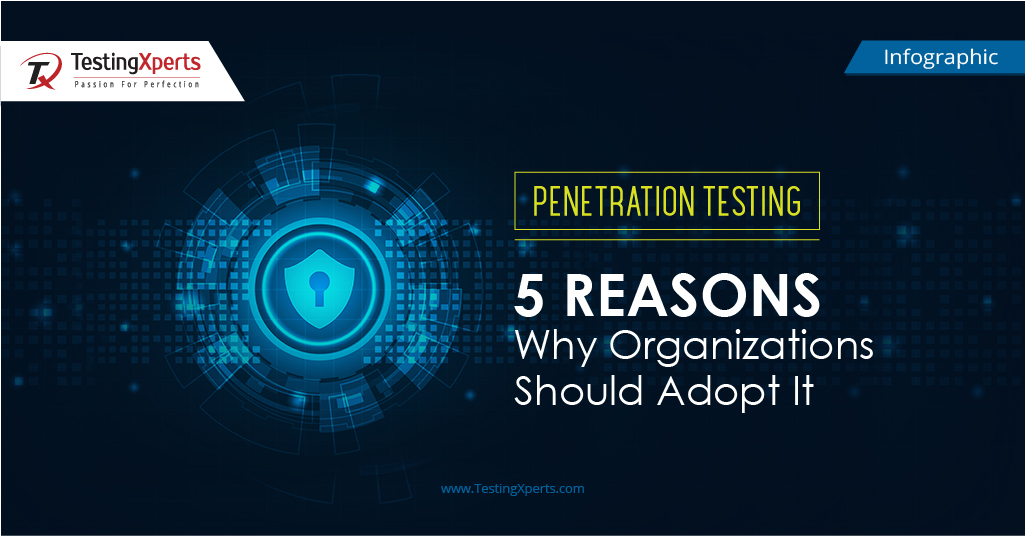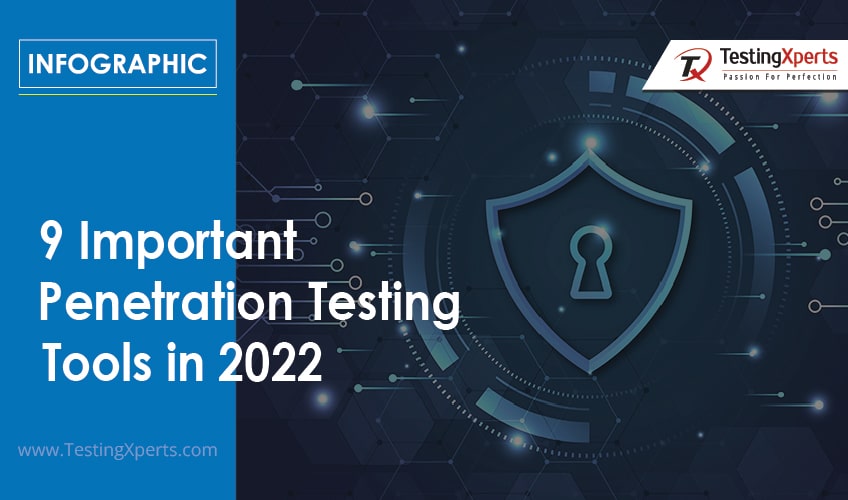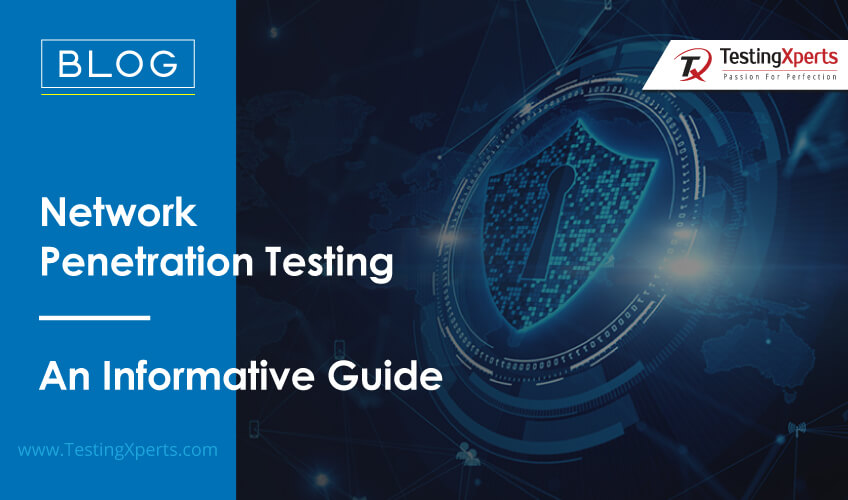
- Vulnerability Assessment and Penetration Testing (VAPT)
- Why does your Business need VAPT?
- 7 Types of Vulnerability Assessment and Penetrating Testing (VAPTs)
- What makes Tx the Leading VAPT Solution Provider?
- Summary
Securing data and digital assets is crucial in today’s rapidly digitizing world. Due to the sudden surge in cyberattacks in the last couple of years, cybersecurity has become a key focus area for CxOs. According to statistics, the cost of cybercrime will grow to around $10.5 trillion by 2025. Industries like manufacturing, BFSI, healthcare, and automotive are the big targets for cyberattacks. So, how should these organizations prepare against potential cyber threats? The answer is performing thorough Vulnerability Assessment and Penetrating Testing (VAPT) at specific intervals. As tech innovations like AI, intelligent gadgets, etc., facilitate market growth projections, implementing VAPT testing has become crucial for robust cybersecurity defenses. However, around 15% of entities do not conduct pen testing, making themselves vulnerable to online threats due to a lack of security assessments.
Either they do not know or simply ignore the financial repercussions cyberattacks could cause, resulting in multi-million dollar losses. This is a matter of concern.
Vulnerability Assessment and Penetration Testing (VAPT)

Conducted by security professionals, VAPT is a methodological approach that assists an organization in improving its security posture. It helps identify, prioritize, and remediate vulnerabilities populating IT infrastructure. Both vulnerability assessment and penetrating testing have their perks and are done simultaneously to achieve detailed analysis. Vulnerability assessment allows businesses to discover loopholes present in their processes. It does not categorize between vulnerabilities that malicious attackers can exploit to cause damage and those that cannot. It only sends alerts about pre-existing flaws and their location.
Meanwhile, penetration tests exploit system vulnerabilities to determine whether breach attempts, unauthorized attacks, or other online threats are possible and how much damage they could cause to the system. Together, vulnerability assessment and penetration testing provide a complete report about the flaws in a system, applications, and web servers and associated risks.
Why does your Business need VAPT?

Vulnerabilities are present at every level of the computing system, no matter the size of the enterprise. If small and medium-sized enterprises think hackers will spare them, that’s a big misconception or misunderstanding. According to the survey, startups and small-sized enterprises are the ones that are more prone to cyberattacks. Usually, small businesses do not invest much in cybersecurity, which makes them a prime target of attackers. If you run a company that uses technology (computers, servers, internet, intelligent innovations, etc.), then vulnerability risk assessment is necessary. There can be security loopholes in the IT infrastructure, which include:
• Complex hardware and software
• Poor authentication protocols
• Poor software and hardware design
• Highly vulnerable endpoints
• System misconfigurations
• Unsecured Network
• Implementing the VAPT approach would deliver the following benefits.
Implementing the VAPT approach would deliver the following benefits.
Optimize Security Protocols
Regular VAPT would allow businesses to benchmark their security protocols year-over-year. It would assist in identifying repeated vulnerabilities, measuring the effectiveness of security investments, and facilitating improvement tracking.
Comprehensive Evaluation
VAPT offers a multifaceted approach to pinpoint loopholes in the systems and simulate real-world attacks. This helps determine the impact, attack, and viability vectors from the simulation.
Compliance with Regulations
Industries like healthcare, banking, and finance are governed by regulatory bodies that mandate security assessments. VAPT ensures that businesses comply with standards like HIPAA, SOC2, CERT-IN, ISO 27001, PIC DSS, GDPR, etc. It helps protect sensitive data and shields enterprises from legal consequences and hefty fines.
Gaining Stakeholder’s Trust
Regular VAPT assessments show business sincerity in proactively identifying and addressing vulnerabilities to ensure data security. It also has a plus point in gaining stakeholder’s trust. Businesses can gain stakeholder’s confidence in their ability to protect critical data, which usually involves personal and transactional details.
Adopting Security-first Approach
VAPT reports are crucial for improving SDLC security posture. By gaining insights into vulnerabilities during the testing and staging phases, developers can mitigate them before release. It would allow businesses to shift from DevOps to DevSecps and adopt a security-first approach.
7 Types of Vulnerability Assessment and Penetrating Testing (VAPTs)

VAPT consists of various methods to uncover and mitigate security vulnerabilities within an organization’s IT infrastructure. Let’s take a look at some of the VAPT types essential to upscale security measures:
Web Application Pen Testing
Web app pen testing utilizes manual and automated tools to pinpoint vulnerabilities in business logic, authentication, input validation, and authorization. Pen testers inject malicious code like XSS, SQL injection, etc., and exploit logic flaws to identify, prioritize, and remediate risks before malicious attacker’s attack.
Cloud Pen Testing
VAPT audits and cloud pen testing aim to analyze vulnerabilities in cloud configurations, access controls, APIs, and storage bases. Testing engineers utilize a combination of manual testing and automated tools to analyze zero-days and cloud-based vulnerabilities using different techniques.
Enterprise Pen Testing
Enterprise-level penetration testing involves simulating real-world cyber-attacks on IT infrastructure, including APIs, mobile and web apps, cloud, physical security, and networks. QA Engineers leverage social engineering techniques and vulnerability assessment to identify loopholes and attack vectors.
Wireless Security Testing
Wireless networks are one of the prime targets of attackers as they act as the common entry point. Testers identify loopholes in network infrastructure and wireless security posture to ensure secure communication and mitigate unauthorized access issues.
API Pen Testing
API VAPT involves replicating real-world attacks to uncover API vulnerabilities, such as injection flaws, authorization vulnerabilities, IDOR, and broken authentication. Testers use automated tools like Postman to manipulate data packets, automate attacks, and identify business logic vulnerabilities.
Mobile (Android/iOS) Pen Testing
It helps find vulnerabilities in the security structure of Android or iOS mobile applications. VAPT examines mobile applications to identify, categorize, and fix vulnerabilities before they become a nuisance.
Thick Client Pen Testing
Thick client or desktop pen testing is a process of evaluating the security of desktop applications. This involves identifying vulnerabilities, testing authentication procedures, analyzing data encryption, resolving security misconfigurations, and checking communication channels. It allows businesses to ensure the integrity and security of thick client software.
What makes Tx the Leading VAPT Solution Provider?

VAPT must be conducted once per quarter for all host systems, databases, networks, and applications. All web and mobile app development projects should also undergo VAPT to ensure no new vulnerabilities enter the ecosystem. Tx’s comprehensive security testing services model is based on industry best practices and decades of experience in software QA delivery. We ensure your apps are reliable, robust, agile, secure, and scalable. Our security testing services across multiple verticals and enterprises promote cybersecurity, facilitating client retention and brand image improvement. Here’s why you should partner with Tx for your next VAPT project:
• Ensure zero false positives with a snapshot of exploitation.
• The global pool of CEHs (certified ethical hackers).
• Ensure compliance with international standards, including OWASP, OSSTMM, etc.
• Get access to a pool for security testing services, including penetrating testing, threat modeling, and static/dynamic analysis.
• Vulnerability-free application with an iterative strategy for further release.
• Ability to conduct security testing across CI/CD.
• On-demand security testing, security CoE, and security consulting.
• Specialized expertise in segments such as eCommerce, retail, healthcare, BFSI, logistics, and media & entertainment.
Summary
In today’s digital landscape, the rise in cyberattacks has made robust cybersecurity essential. VAPT—Vulnerability Assessment and Penetration Testing—is crucial for safeguarding businesses. This dual approach effectively helps uncover and address IT vulnerabilities, enhancing overall security. While 15% of organizations neglect this practice, its importance cannot be overstated, especially with potential financial losses from cyber threats. VAPT improves security protocols and compliance with regulatory standards and boosts stakeholder confidence by demonstrating a proactive security stance. Tx’s expertise in delivering comprehensive VAPT services ensures businesses maintain a resilient and secure digital environment. To know how Tx can assist with VAPT, contact our experts now.
Discover more
Get in Touch
Stay Updated
Subscribe for more info




